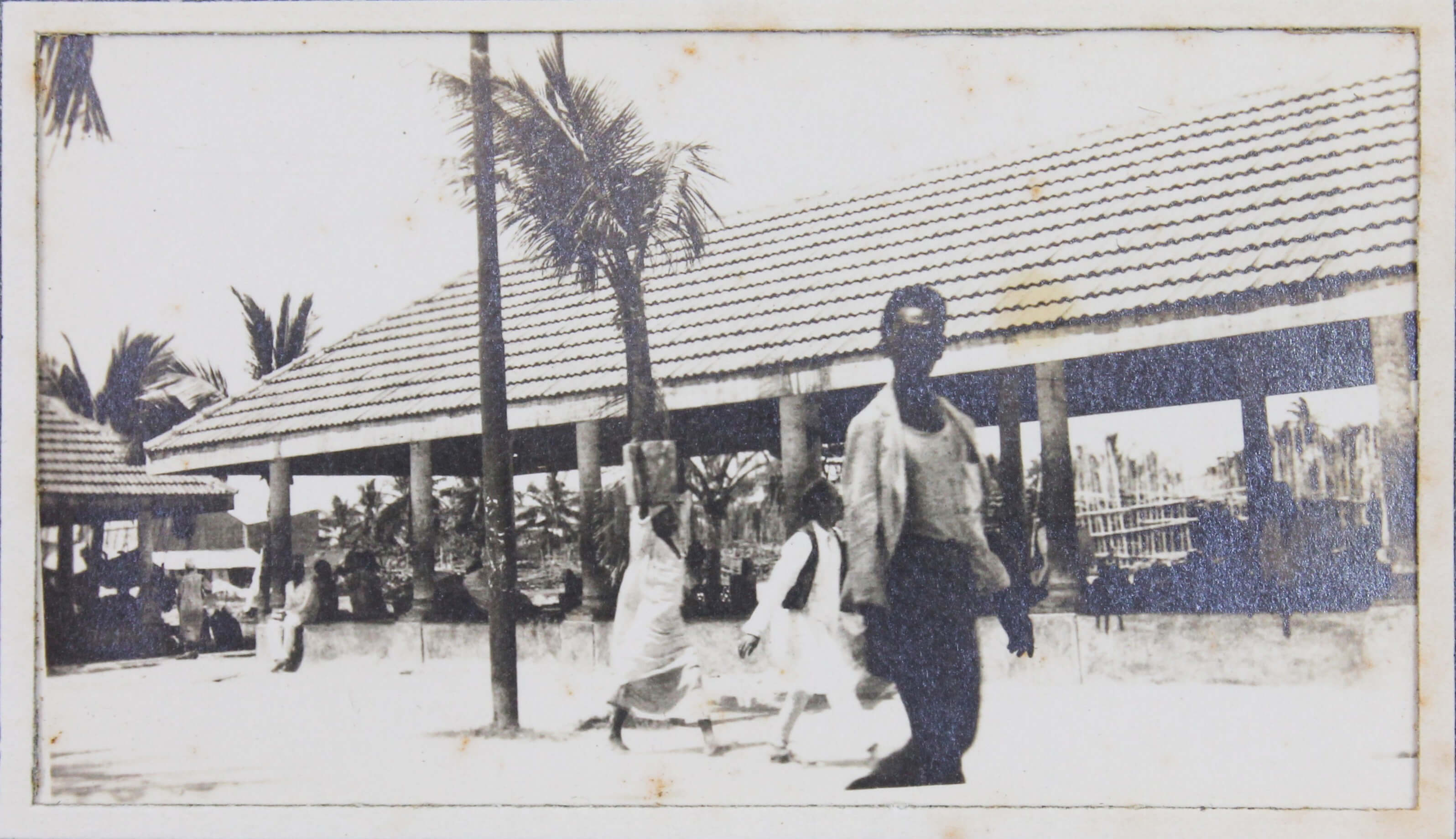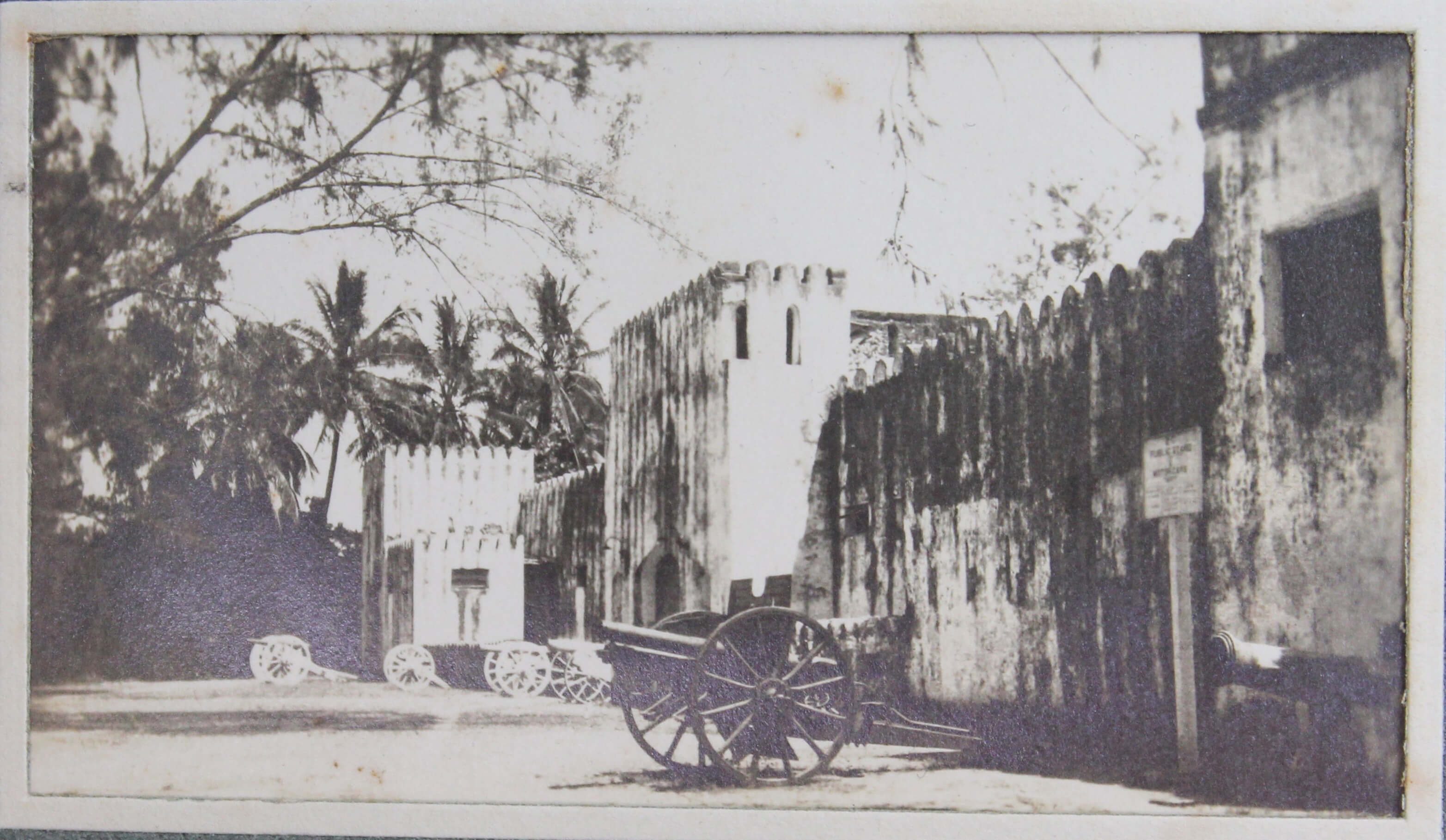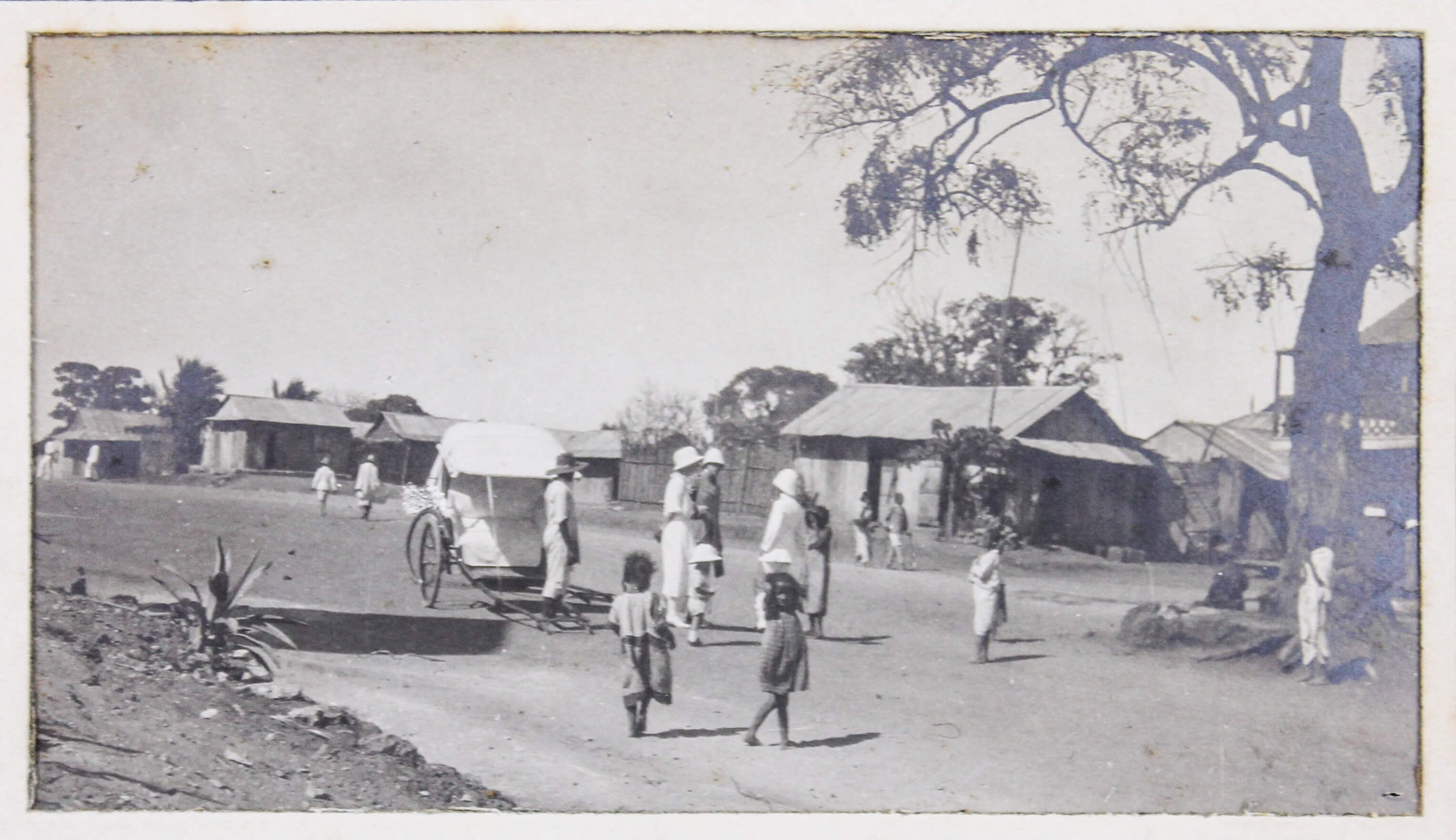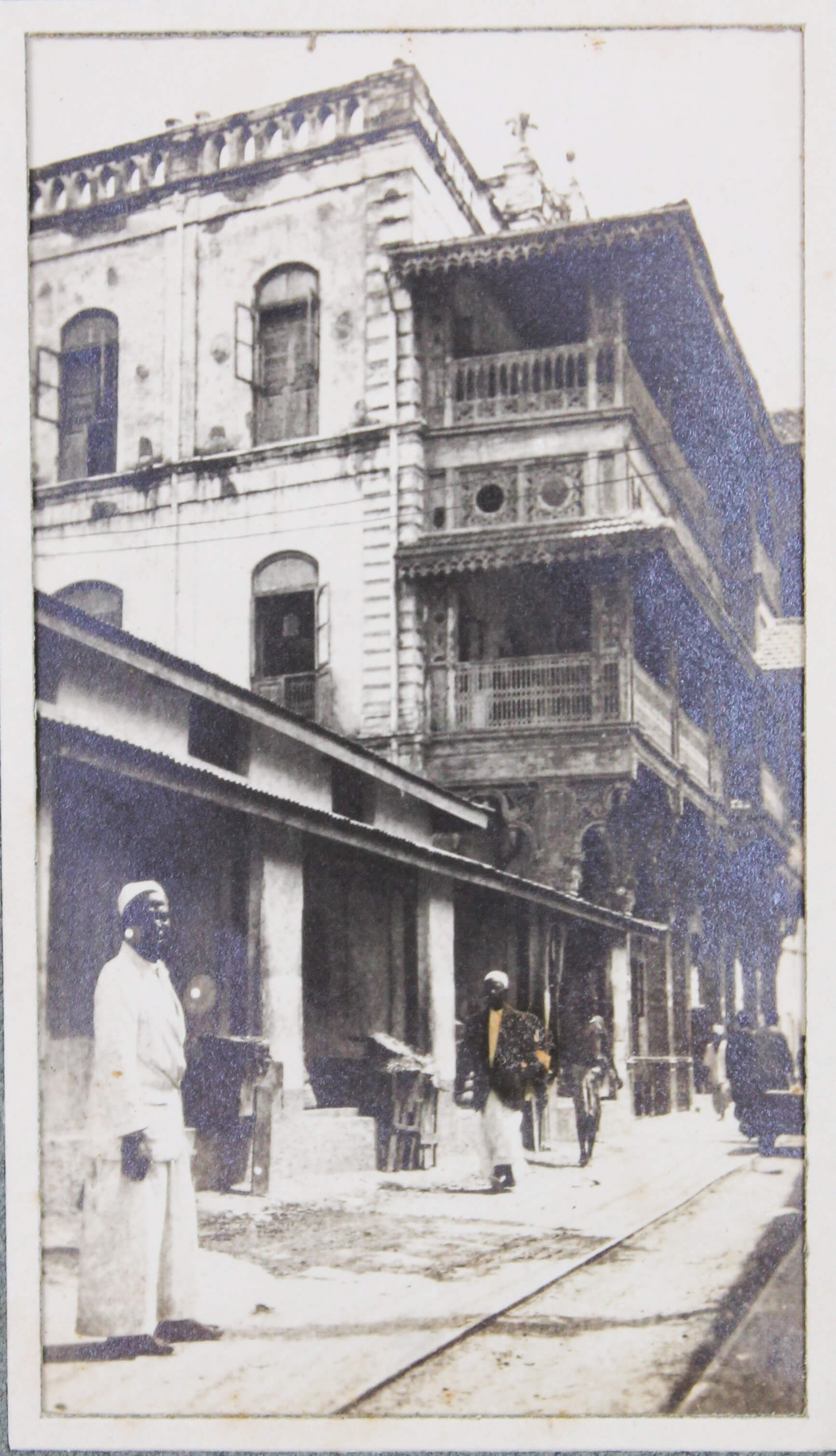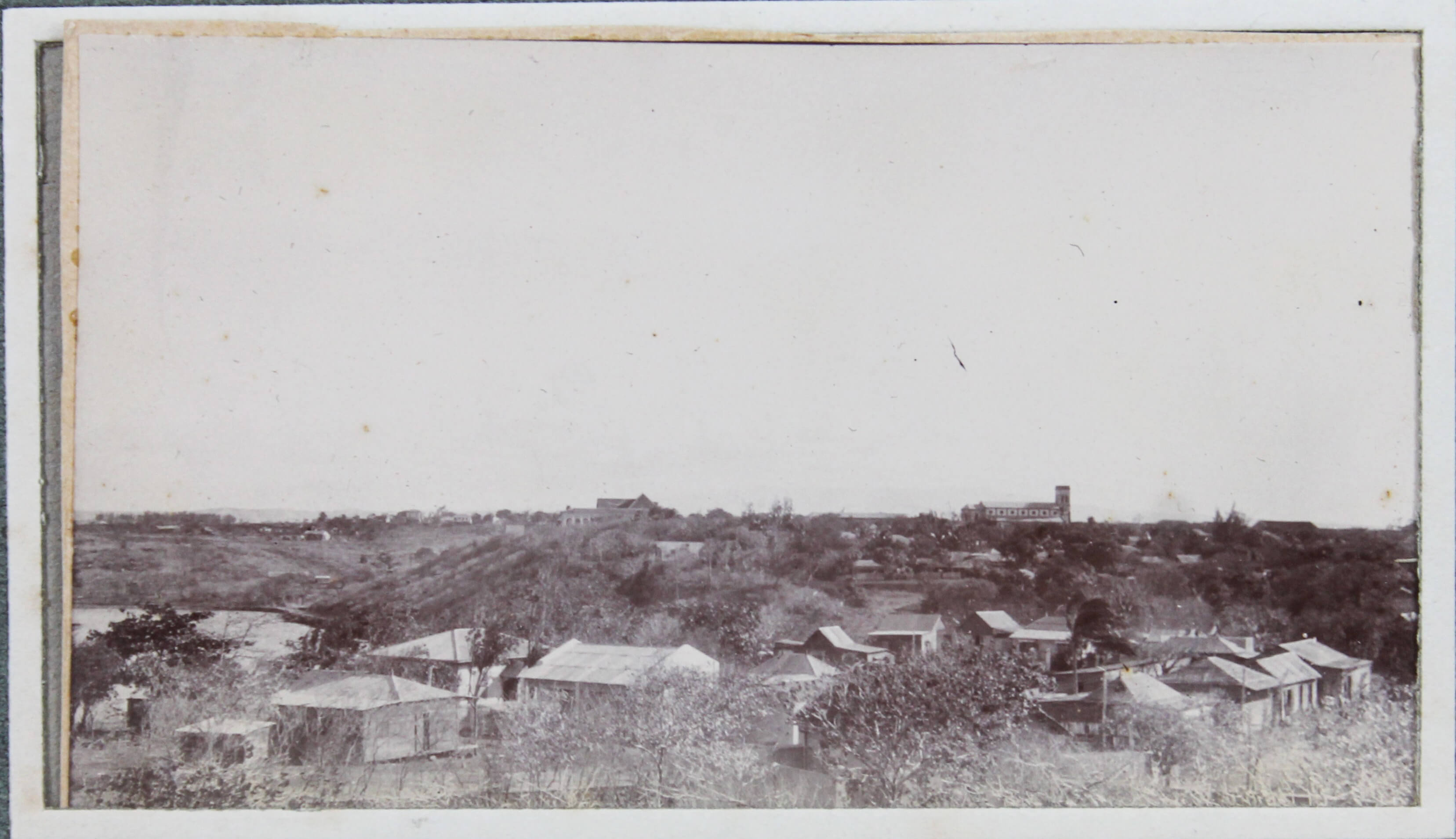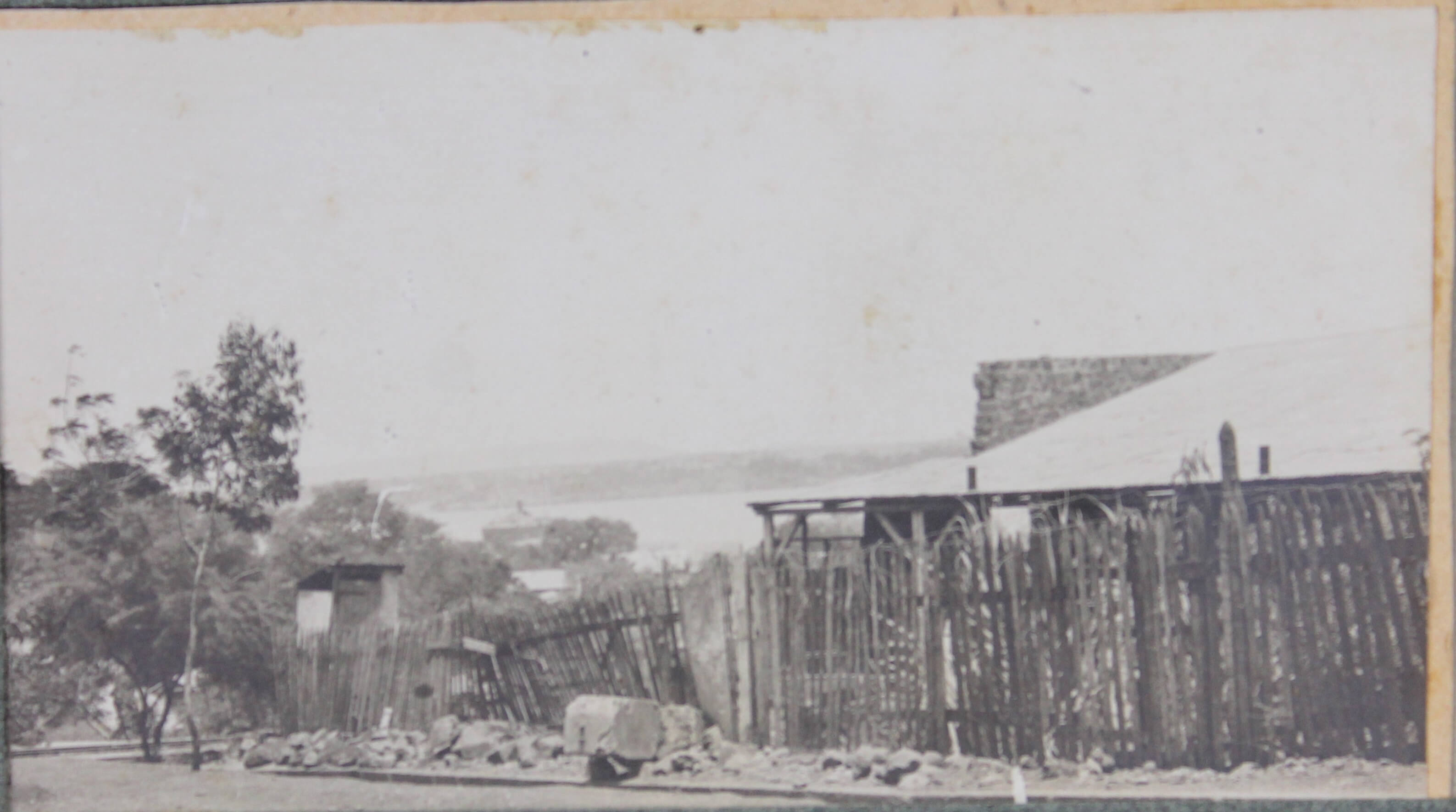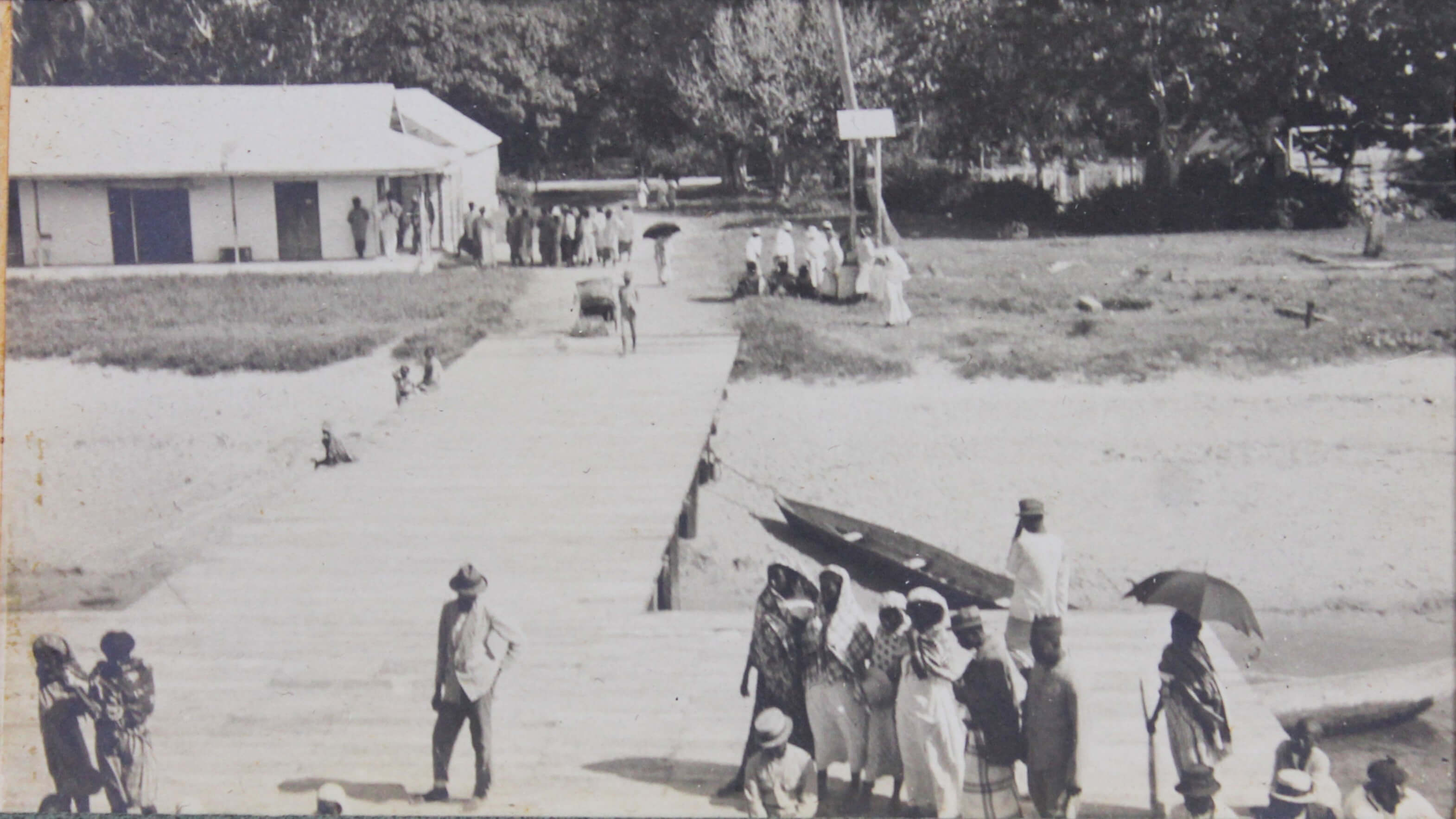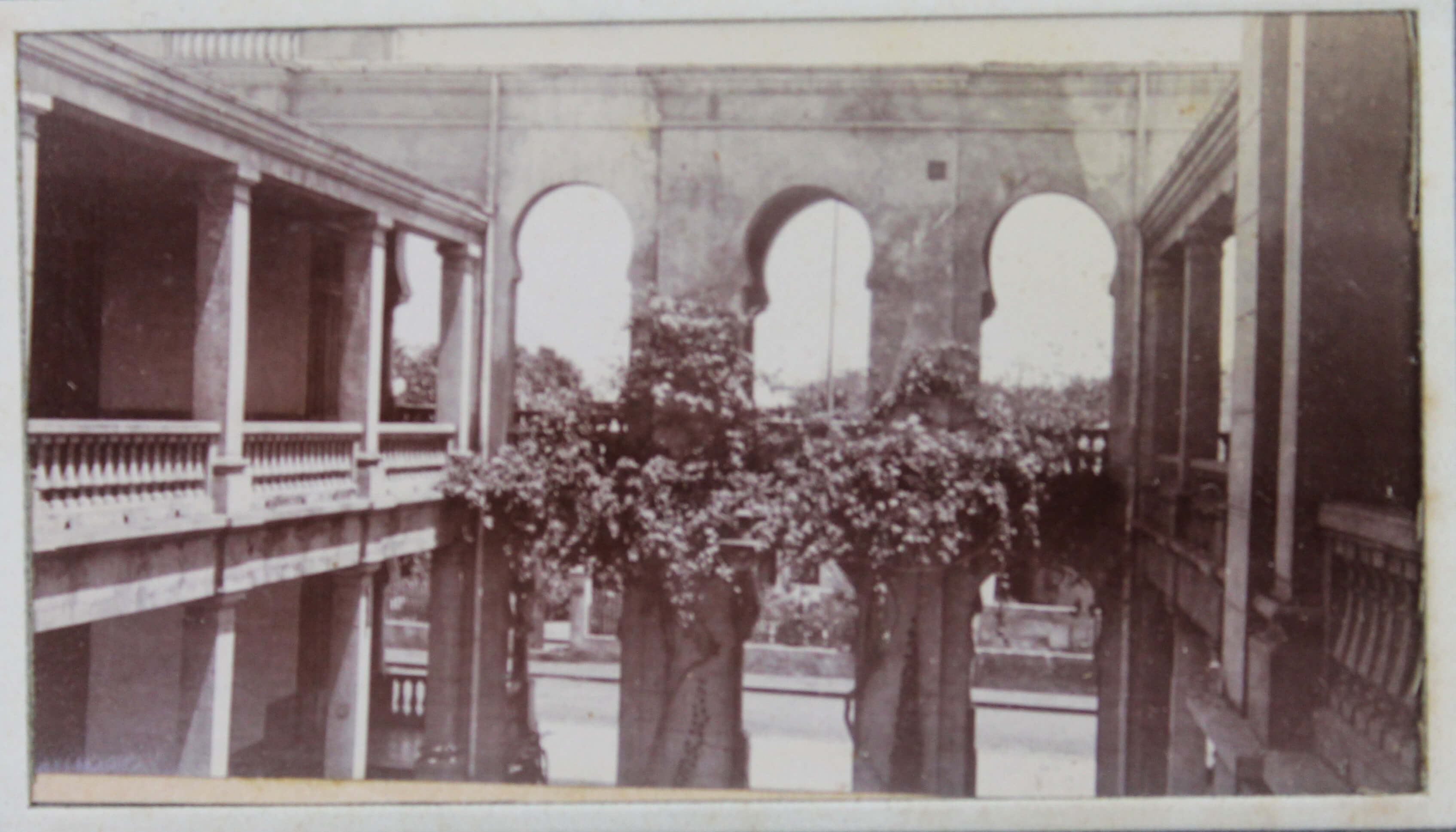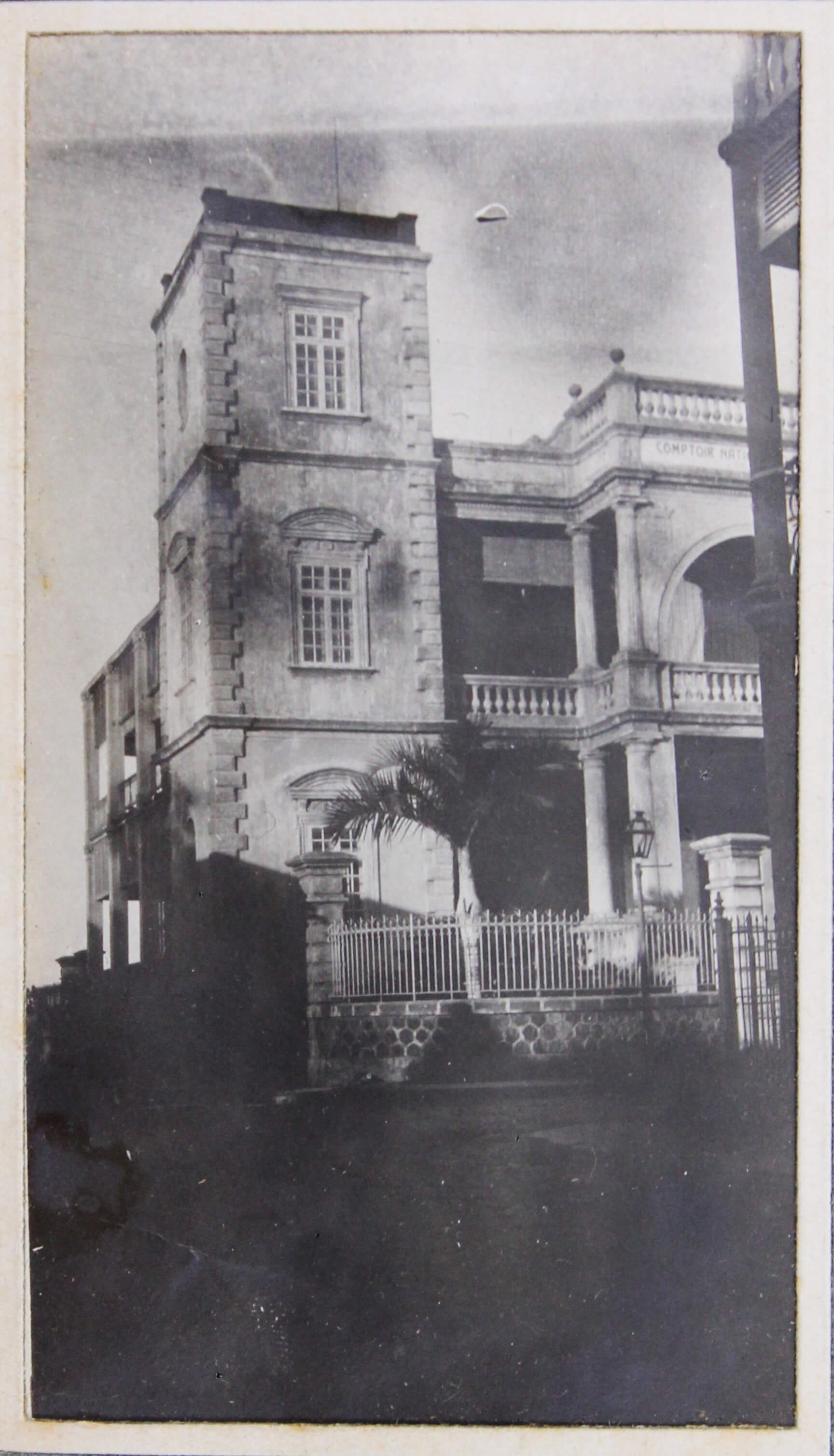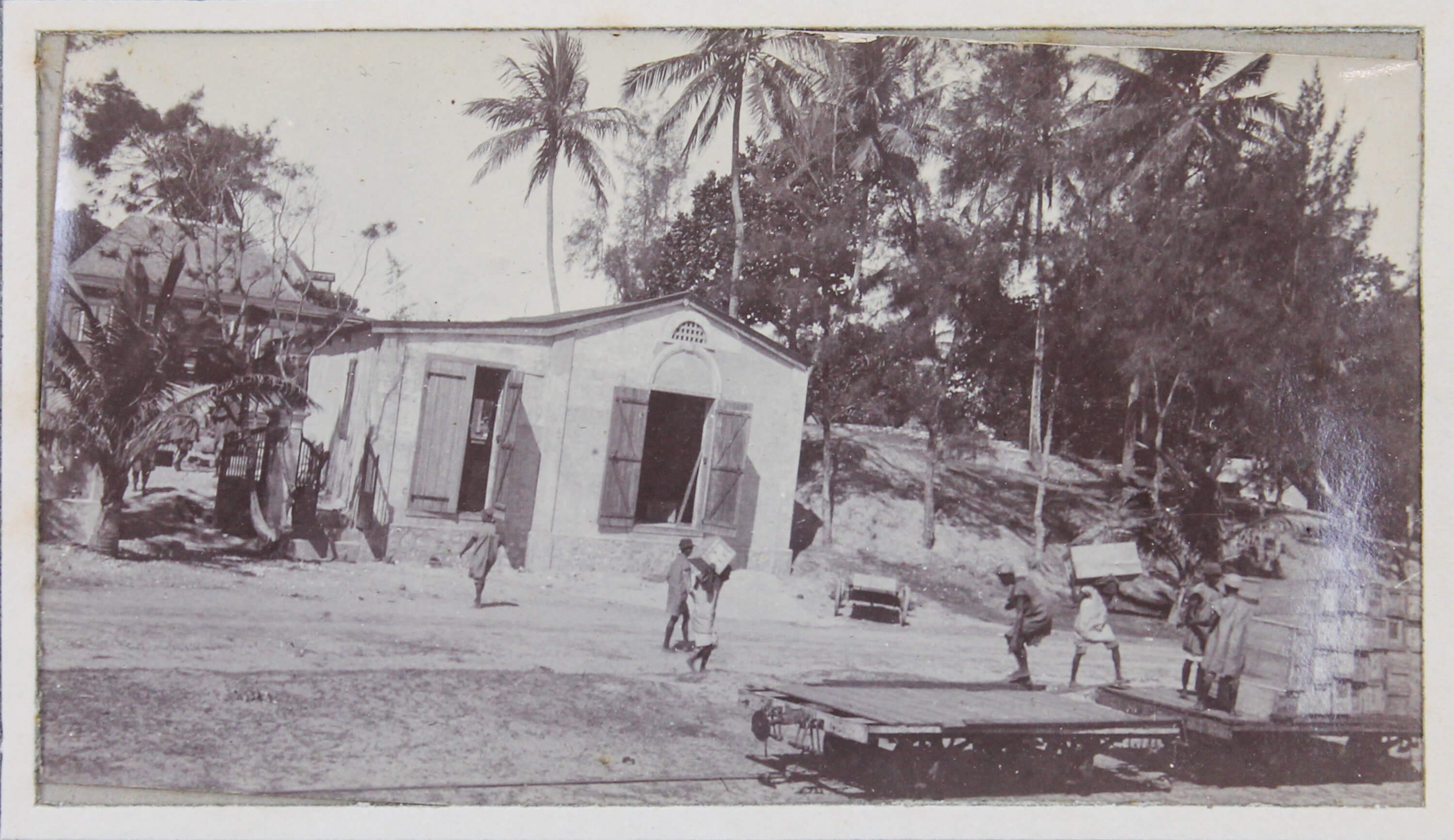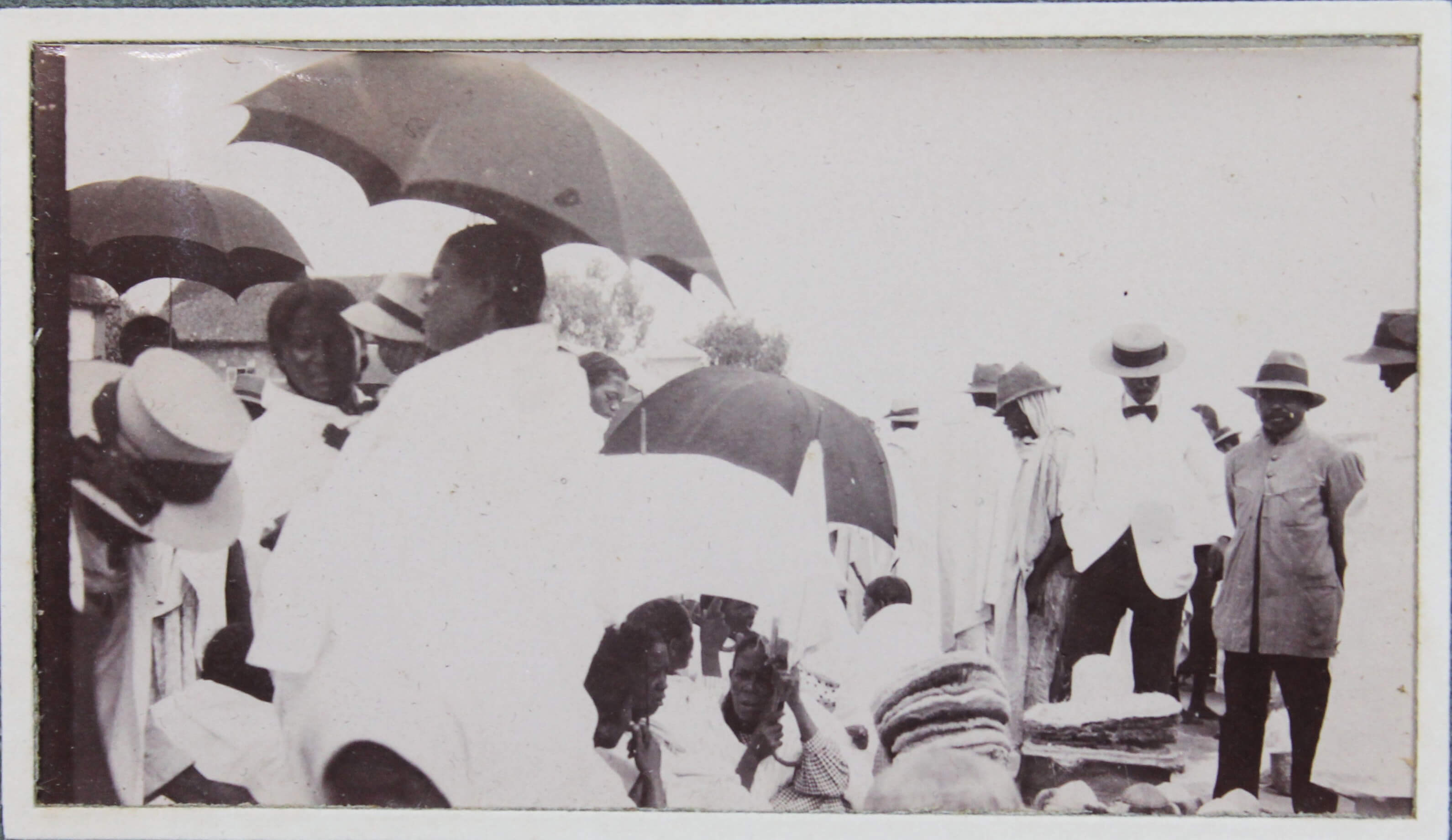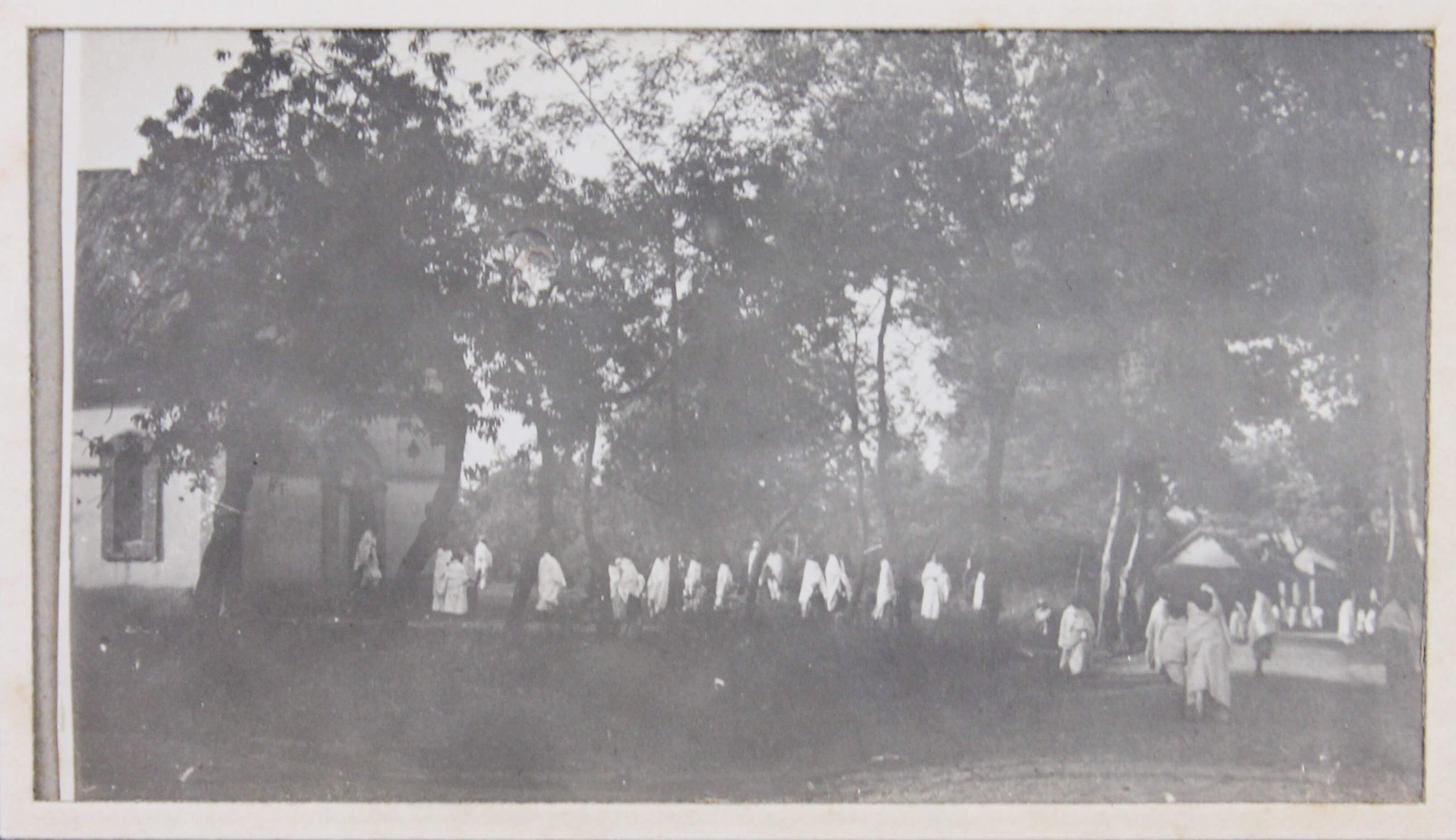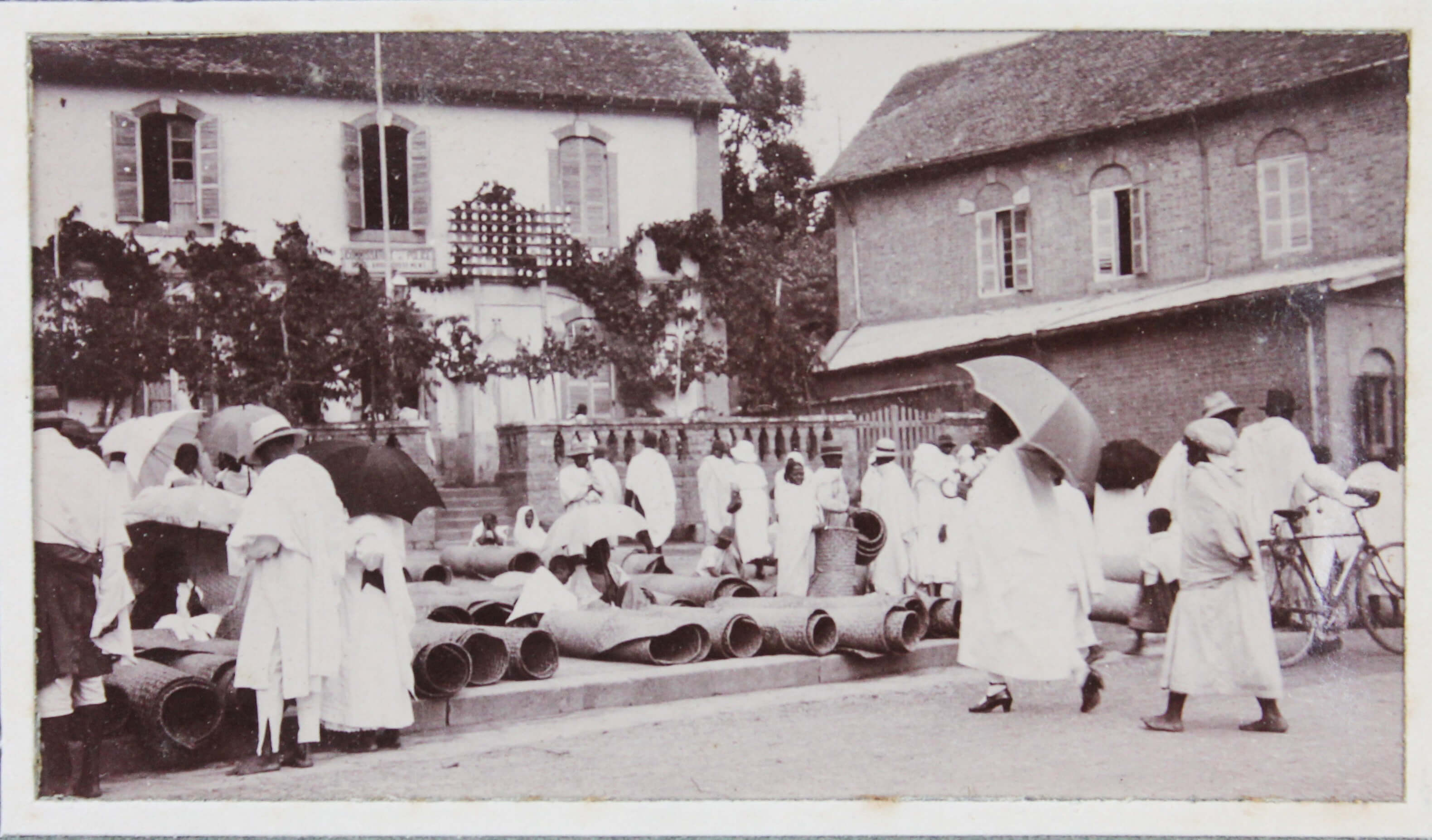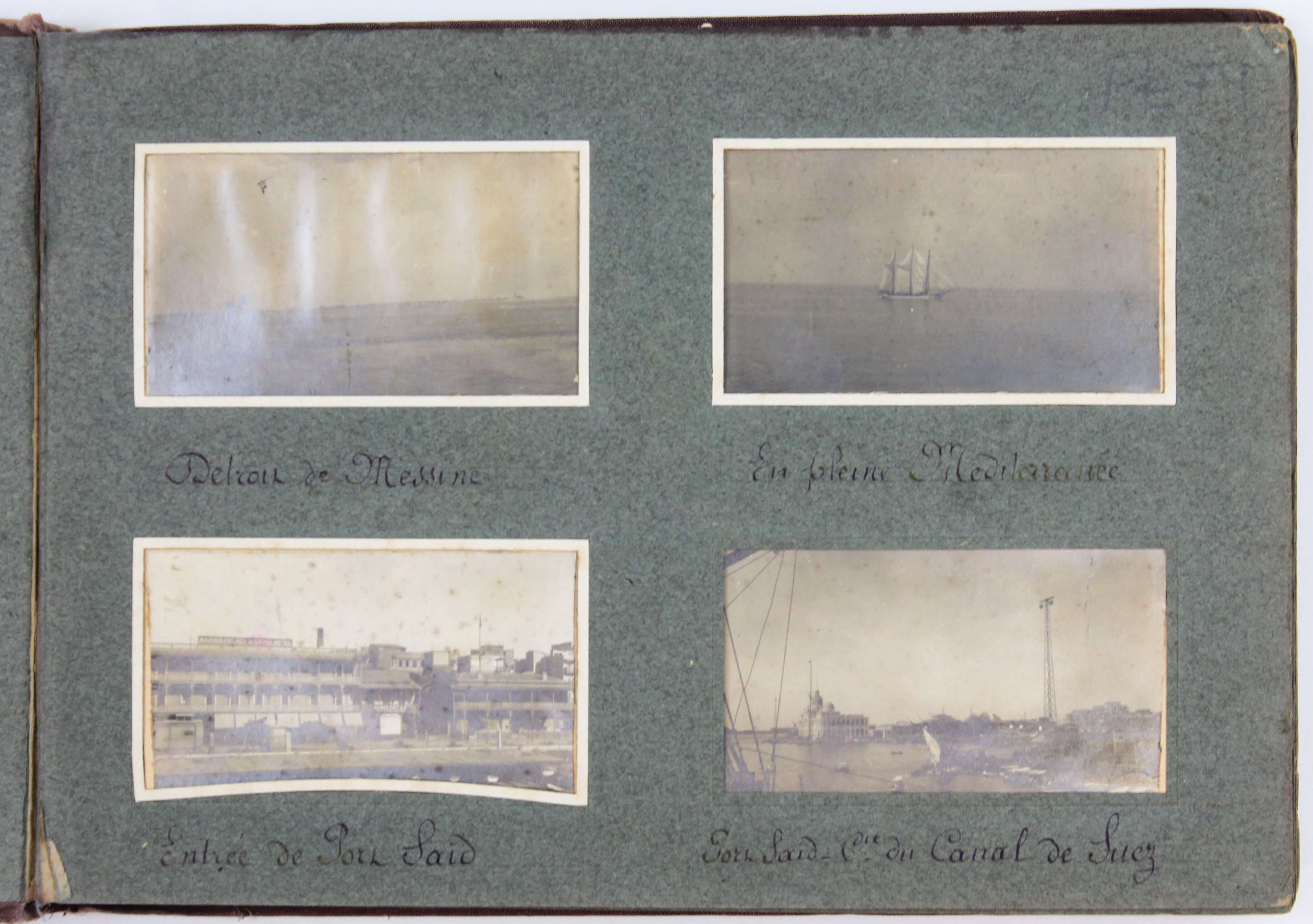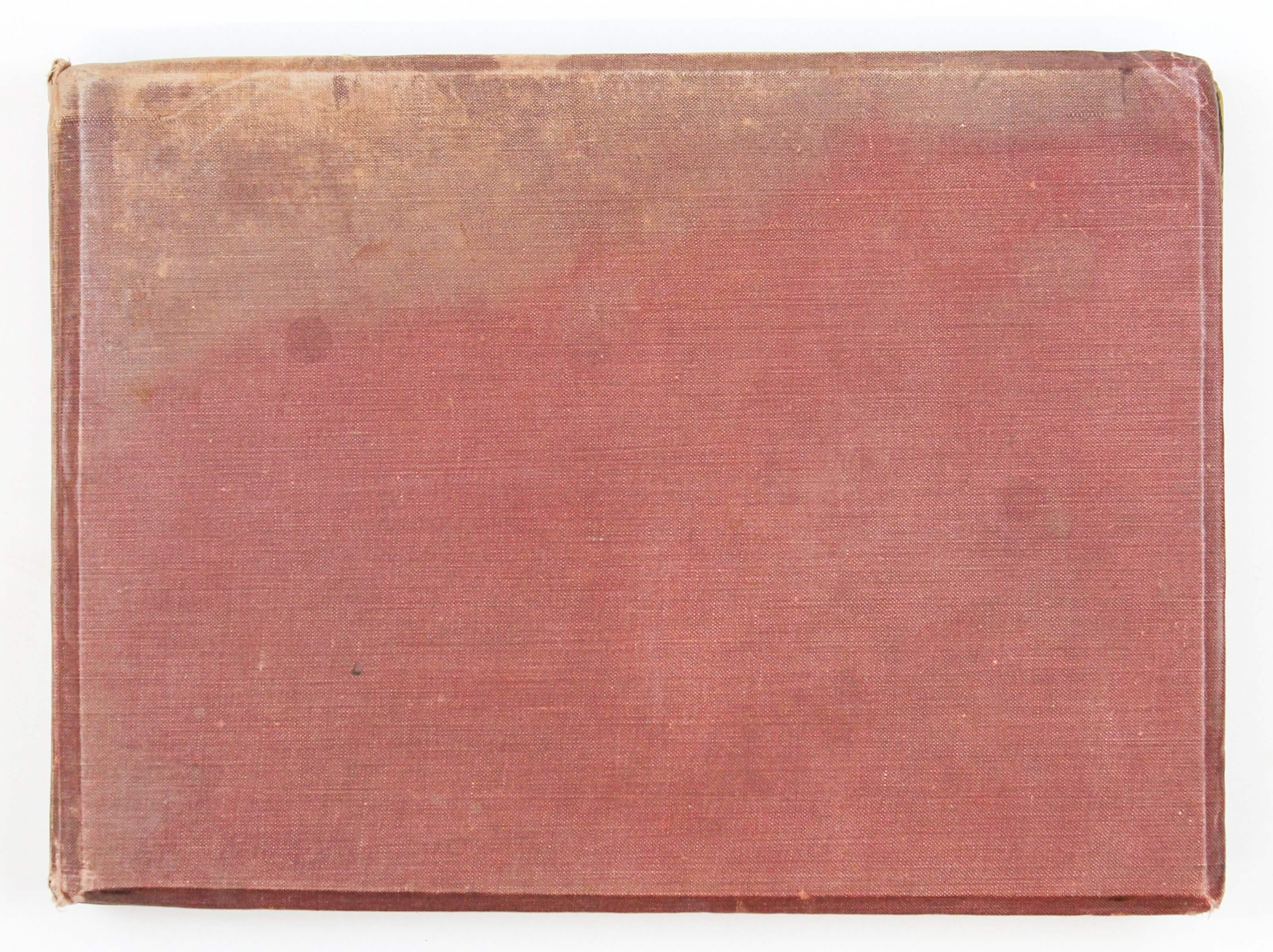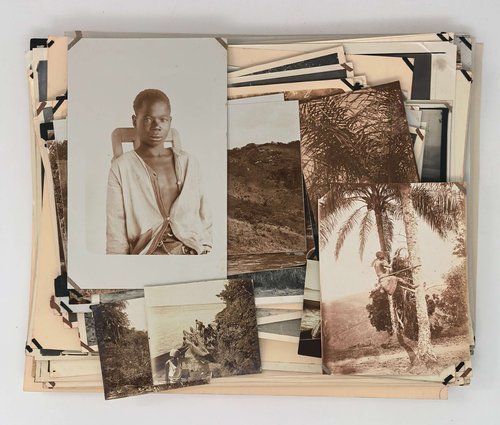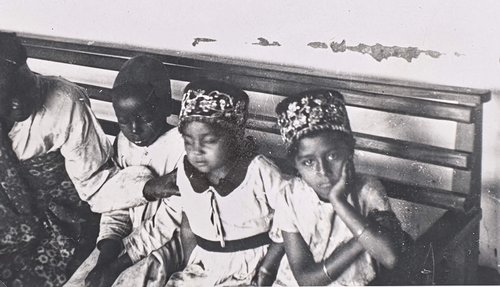
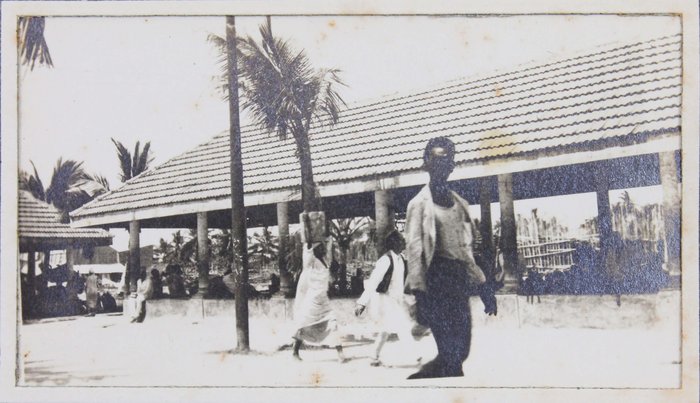
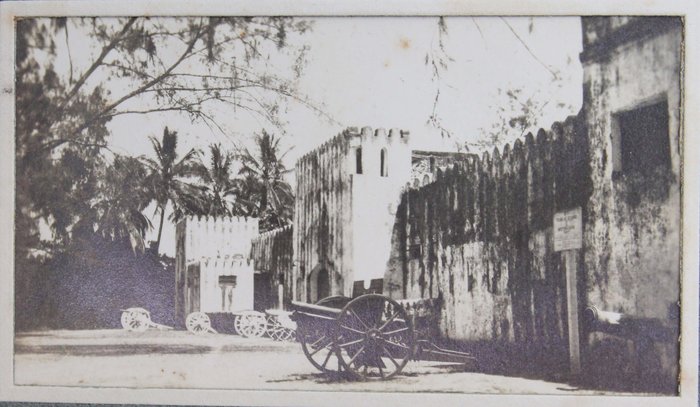

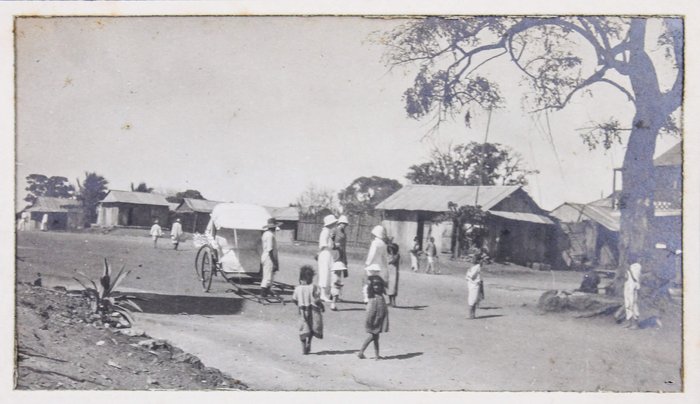
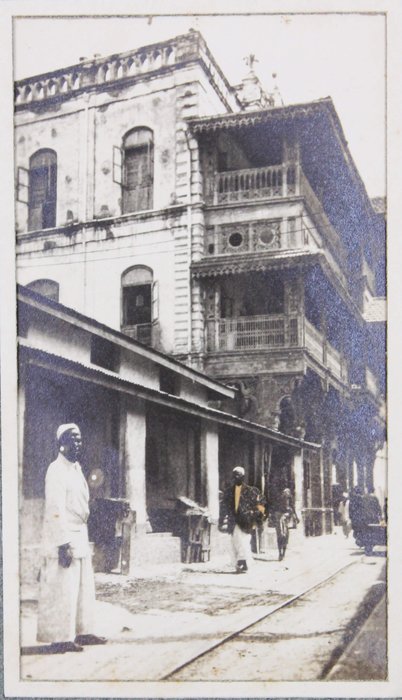
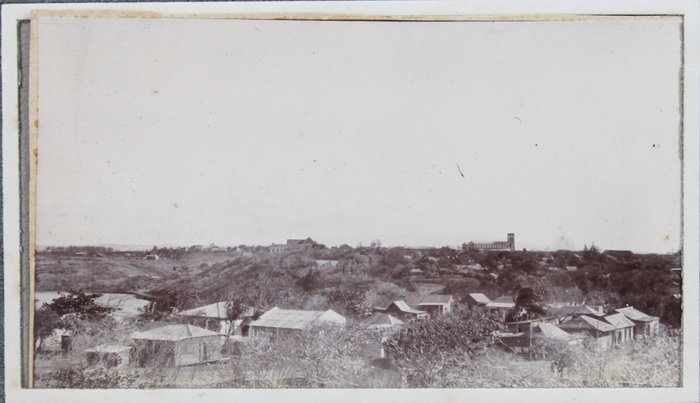

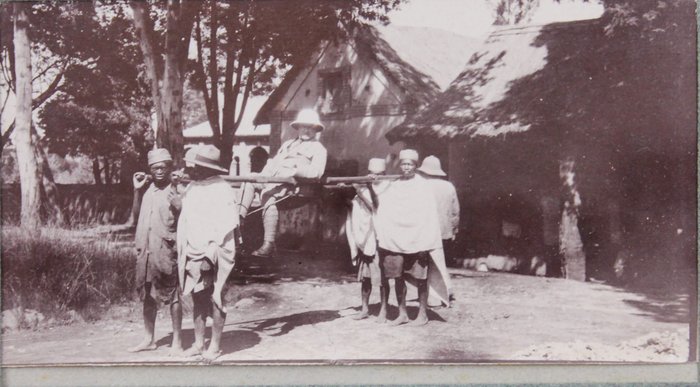
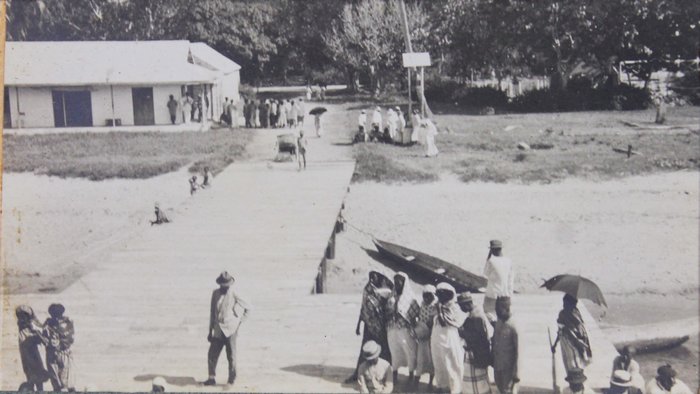
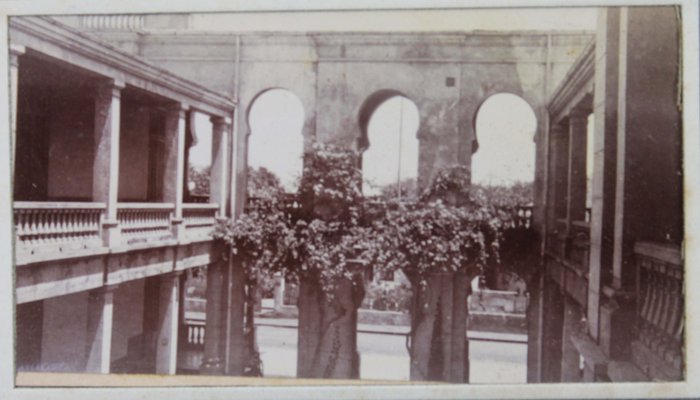
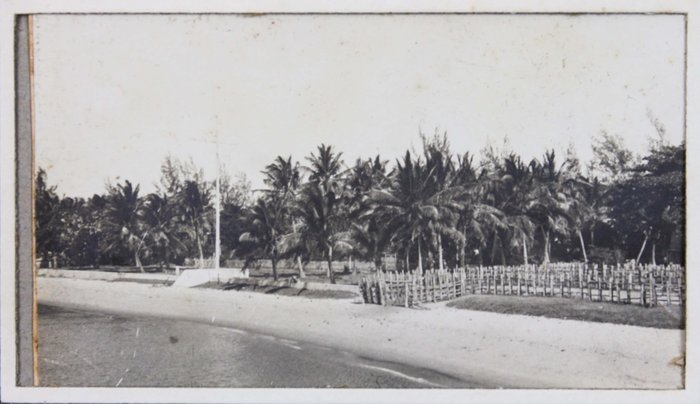
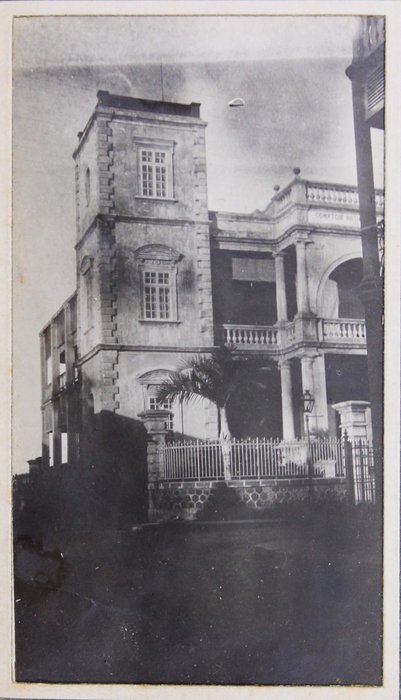
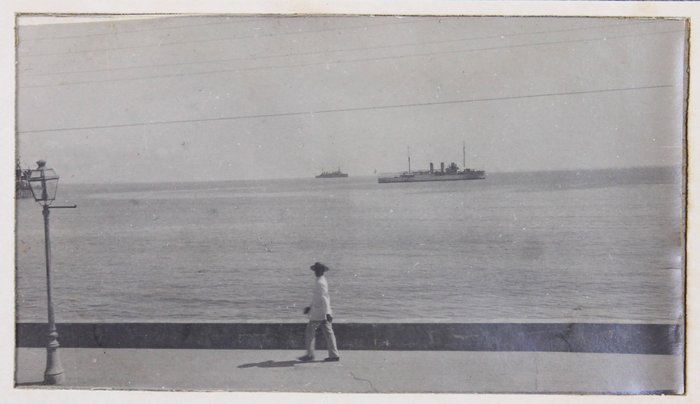
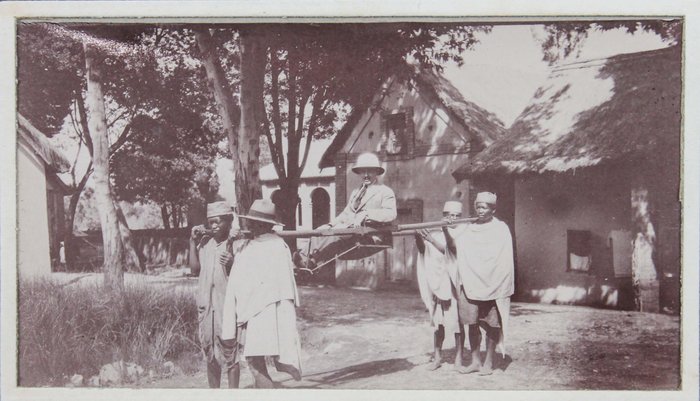
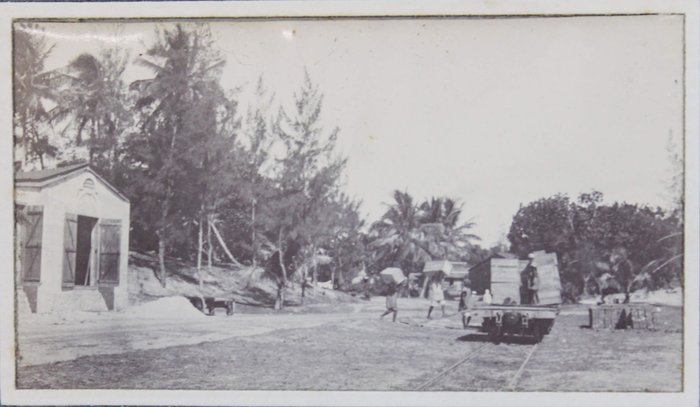
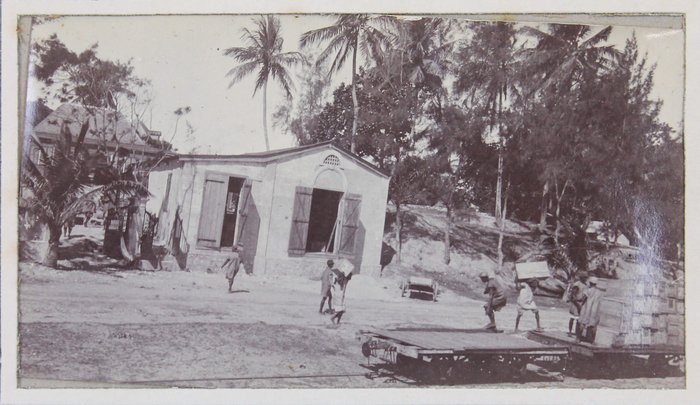





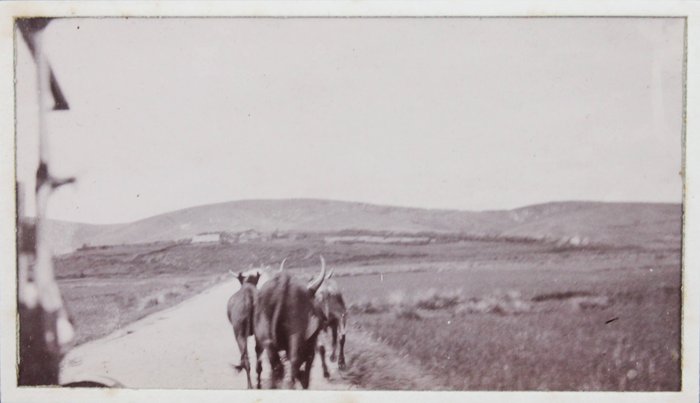
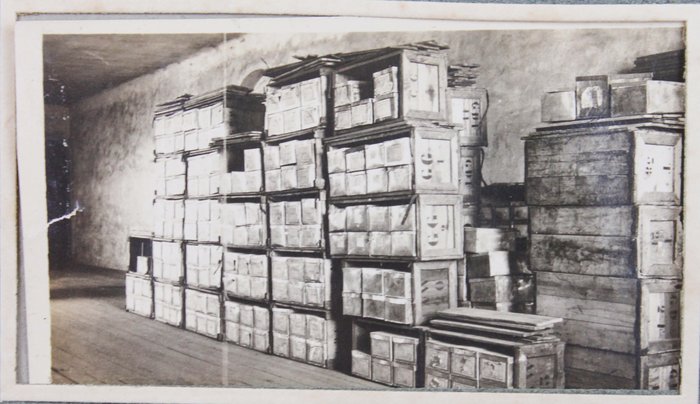
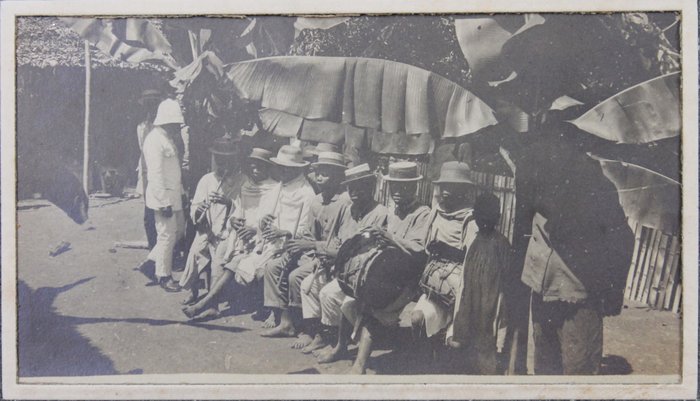

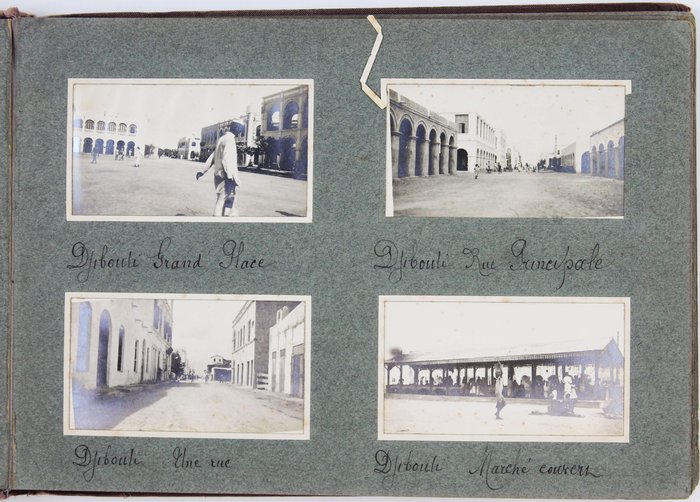


#PE79
Ca. 1920s
Oblong Quarto album (ca. 21,6x29,4 cm). 12 cardstock leaves. With 85 mounted original gelatin silver photographs ca. 6x10 cm (2 ¼ x 4 in). Most photos with period French ink captions on the mounts. Period light brown full-cloth album. Binding worn, photos age-toned, but otherwise a very good album with strong, interesting photos.
Historically significant collection of original gelatin silver photographs taken in Colonial Madagascar in the early-1920s.
According to the captions, the compiler and his companion departed France by steamer, traveling to Madagascar via the Suez Canal and the Gulf of Aden, with stops in Zanzibar and Dzaoudzi (Mayotte). Upon arrival in Madagascar, they continued their journey from Majunga to Ambodiriana, traveling along the northern coast. The compiler may have had connections to the vanilla trade, as the album includes several photographs of vanilla warehouses, both in Tamatave and in Marseille (with the latter including interior views).
The album features eighty-five well-executed photos from the journey, mostly documenting French Madagascar. Five early photographs of the capital, Tananarive (Antananarivo), show general views of the city and lively market scenes, with dozens of locals in traditional attire walking among lines of carpets and hats.
Over ten excellent photos portray the port of Tamatave (Toamasina) on Madagascar’s eastern coast. The images feature general views of the city (beach, coconut alley) and its surroundings, local landmarks (the bank), and the bustling Main Street. Especially interesting are two candid shots, showing local workers transporting boxes of vanilla from a warehouse into a truck, likely destined for export to France.
The album also contains about five interesting photographs from the nearby village of L’Imerina, which the compiler likely reached by filanjana (a type of sedan chair carried by several people). Among the most important are scenes of a lively gathering at the local Catholic mission, including one captioned “Ramatoa leaving the Catholic mission.” Rosalia Razarinia Ramatoa, a native of L’Imerina, was among the first Malagasy women missionaries, sent by the London Missionary Society to the southeast coast of Madagascar in 1890. A pioneering educator, she served in Farafangana and later in the Betsileo region before returning to L’Imerina in the 1920s.
The other photos from Magadascar mostly show Diego Suarez (modern-day Antsiranana) (general views and the inner courtyard of a local hotel), Vohemar (beach and dock), Saint-Marie (the alley of mangoes), Mahajanga (general view, indigenous house, Mahabiba St.), Nosy Be (shoreline), and Ambodiana (an orpheon).
The collection also includes over thirty well-executed photos, documenting the compiler’s voyage to Madagascar aboard a steamship. The photographs illustrate life on board the vessel, as well as key stops along the journey (Port Said, the Suez Canal, Djibouti, Dzaoudzi in the Mayotte archipelago, Aden, and Zanzibar). The album closes with photographs from Marseille, depicting what seem to be stacks of vanilla in a warehouse, likely received from Madagascar.
Overall, historically significant collection of original gelatin silver photographs taken by a French tourist in Colonial Madagascar in the early-1920s.

